Gear Highlights from the 137th AES: 21 Picks to Power Your Studio
You know how we vibed off of the 137th AES. But what about the new tech that really tickles our fancy?
While the massive breakthrough eluded us in 2014, there was plenty of evolutionary elements to elevate the audio craft. In no particular order, here’s what we saw that was hip, hot and happening on the show floor:
Antelope Audio Satori and MP32 – Antelope’s inventors have been busy this year, using AES is the launchpad for multiple devices. The Satori, a true analog monitoring and summing system drew attention for its clean/transparent performance, extreme connectivity, mid-side monitoring, and a fully analog eight-channel summing mixer. Meanwhile, the MP32, designed for compact studio and live recording environments with 32 channels of front panel-accessible mic preamps, was another Antelope attraction.
Neumann Collectors Edition U 47 fet – Neumann was understandably, understatedly, ecstatic about resuming production of their classic condenser microphone. The original, a transistorized successor to the tube-based U 47, made its mark on the ‘70s sound with its ability to handle high sound pressure levels. Now the new version can take up to 137 dB SPL (147 with attenuation) and sound pretty doing it – put this Neumann in a kick and feel what happens. This nickel-plated microphone retails for $3,995, comes with a high-quality wooden case, and an individual certificate signed by Neumann.Berlin President Wolfgang Fraissinet.
Audio-Technica AT5045 — this new cardioid condenser instrument microphone is a striking new addition to the A-T line. Sporting a distinctive rectangular capsule, the AT5045 provides the benefits of both a small and large diaphragm microphone. It serves up a wide dynamic range of 141 dB, and is available for $1,399 as a single microphone, $2499 as a stereo pair.
SoundToys 5 — The booth of Vermont-based plugin wizards SoundToys was routinely swamped at AES, and with good reason: this show marked the first public showing of SoundToys 5. With this installment, all 12 of the company’s plugins are available in a single effects rack. Offering customized order of effects, master input/output level controls and much more, the fun quotient of playing with these toys just went up exponentially.
Waves DigiGrid — there’s nothing like a hands-on, in-person demonstration to demystify Digigrid, a joint product of waves and DiGiCo. We watched in wonder as DiGiGridIOS brought massive processing power to the production rig at the Waves booth, representing a total turbocharge for any native DAW user. On the ProTools TDM side, DigiGridDLS bridges Pro Tools HD/HDX and HD Native systems with Waves’ SoundGrid DSP server. It’s a setup the allows users to track, monitor and mix while running hundreds of Waves third-party plug-ins, all with just .8 ms latency. When you get a chance, see it demonstrated live – but beware, you’ll probably get hooked.
JBL LSR705 and LSR708 — JBL has been on a real role for the last couple of years. Their affordable 3-series powered studio monitors have proven to be a big hit, and their M2 master reference monitors have set the bar extremely high for mixing and post, winning over choosy users like Frank Filipetti.
Now the wisdom gleaned from the M2 is being ported over to the smaller (and more accessible) new 7 series of master reference monitors. Sporting a passive design that must be purchased along with a processor, a demonstration of the LSR705 and LSR708 at the nearby Grammy Museum was an ear-opener: The monitors projected extremely real and natural sound — even the diminutive LSR705’s ($10,000 for the system) filled the Grammy theater in every direction, and you would’ve sworn there was a subwoofer in the mix. Coming in January, the 7 series may well keep monitor momentum on JBL’s side.
Burl Audio with Dante — Speaking of keeping things connected, Burl Audio had its own under-the-hood innovations on display. As of 2014, Burl’s B80 Mothership, B2 Bomber ADC and Bomber DAC are compatible with Dante, which stands as the de facto standard for audio over Ethernet. The routing capabilities of a studio, even one helmed by a lone laptop with an Ethernet jack, are tantalizing when you put Burl’s gear into the mix. They can explain it better than we can, but we sure like where this is going.
iZotope Ozone 6 — visitors to AES were treated to a closeup look at iZotope’s ever-beloved mastering software suite. Due for release quite soon, Ozone 6 displayed a highly creative new workflow, an intuitive display with tons of visual feedback, and the suite’s first-ever dynamic EQ. Ozone has already established itself as an essential tool for mixing and mastering, and this update should only serve to reinforce that lofty status.
Universal Audio UAD-2 Satellite Thunderbolt DSP Accelerator – seeing this desktop-sized unit in person showed why it’s the exact right fit for many of today’s producers and mixers. Within the compact form factor, the Satellite Thunderbolt packs plenty of power for running UA’s DSP-intensive plugins on Macs. Available in QUAD or OCTO models with a choice of four or eight SHARC processors, UAD-2 Satellite Thunderbolt DSP Accelerators just became available on October 8. They can also be integrated alongside UAD-2 PCIe cards and Thunderbolt-enabled Apollo interfaces, including Apollo Twin, Apollo, and Apollo 16.
Gobbler 2.0 — The file-sharing platform has raised its game with a big overhaul — computer jockeys who have been on the fence may now find a test drive irresistible. Highlights of the latest version include “Workspaces” with massive storage for housing projects and further streamlining of collaboration; absolutely any file type is compatible; projects can be opened with a single click in the central interface; and Gobbler Collect will automatically find, reference, and upload all associated assets and files for a DAW project, no matter where they live on your computer.
Did we mention that Gobbler 2.0 is currently free while it’s in beta? We did now.
Shure PSM 300 — for the live sound crowd, fresh off the presses was the Shure PSM 300 stereo personal monitor system. It has 24-bit digital audio, custom mix controls, and two different versions to choose from. The succintly named P3TR112GR is an easy-to-use system created for entry-level users, while the P3TRA215CL (say that five times fast) is the more professional of the pair. Demonstrations on the floor revealed that the former is indeed extremely simple to master, operates in three 24 MHz frequency bands, and can support up to 15 compatible channels per frequency band – starting at just $699, it’s a great foray into the world of wireless.
Bettermaker — it seems like every year we’re noting another innovation from Poland-based gear creators Bettermaker, and 2014 is no exception. This AES we were taken by the extremely streamlined look of the EQ502P Remote, a fully analog Pultec-style EQ that communicates with your DAW via USB – and zero front controls. Along with the parametric 542 EQ Remote, these are fully recallable via plugin analog units that keep you in the sweet spot at all times.
sE Electronics SPACE — This kindly company cleaned up the act of recording vocals a long time ago with the Reflexion Filter Pro. Now they’ve taken things further with their high-performance SPACE, which improves on the design with better absorption coefficients and larger air gaps. The result: increased diffusion across the entire frequency range. You could step right up to the mic at AES, and the larger design felt right.
SSL L300 and XL-Desk — We already informed you about the arrival of SSL’s L300, a compact version of the L500, which in 2013 marked SSL’s first foray into the live console arena. In person at AES, the L300 looked like the perfect-sized package, and the addition of the new V2.5 software only increases the appeal for touring, installation, house of worship, and theater audio pros. Meanwhile, their new mid-size analog console, the XL-Desk, drew plenty of our eyeballs on the show floor. Especially beautiful to see was the built-in 18-slot 500 format rack, accommodating an SSL stereo bus compressor module in the last two slots — a switchable high pass filter has been added to that legendary unit for the XL-desk.
PMC QB1-A — Those fortunate enough to be in attendance at the Capitol Recording Studios event on Thursday night got to hear PMC’s serious new speakers first-hand: the QB1-A. A large-scale, ultra-high-resolution main studio monitor with analog and digital inputs, the QB1-A can be either soffit-mounted or free-standing. Either way, you might want to stand back a few feet from these highly advanced boxes, which one Capitol engineer described as “beautifully and smoothly loud.” Picture a Formula 1 racecar for your monitoring, and you have the right idea. At $105,000/pair, just don’t plan to put them in your project studio.
Avid S3 — The reigning godfathers of audio show they were listening to their customers with the rollout of the ProTools S3 desktop control surface. Derived from the popular S3L live-oriented controller, the S3 also takes a good deal of functionality from the larger Pro Tools S6 control surface. The result is a versatile, ergonomic, and efficient tool for mixing on ProTools. With 16 channel strips, 32 touch-sensitive push-button rotary encoders, and 32 high-resolution OLED displays, it feels terrific, and looks ideal for smaller studios and mobile missions.
AEA N8 — One of audio’s gentleman scientists, Wes Dooley, was smiling like a proud poppa on the introduction of his latest creation: the N8 ribbon microphone. Part of the Novo series and following the well-received N22, Dooley claims that the N8 is “more open and natural than any ribbon mic you’ve ever heard.” That’s a big claim, but if anyone is entitled to make it, it’s Dooley. Extremely transparent, the N8 is intended for use on overheads, strings and room recording, and makes use of the same aluminum ribbon that distinguishes AEA’s flagship R44 model — meaning this mic is a direct descendent of the acclaimed RCA 44 type.
Chandler Limited REDD.47 Tube Preamp — What better way to top off this list than with a good ole’ 1RU masterpiece? That’s what the world gets with the new Chandler Limited REDD.47 tube microphone preamp. Part of the company’s Abbey Road collection, the REDD.47 is famed for being part of every Beatles record made from 1964 to 1968. The sound is punchy and aggressive, and inseparable from the gorgeous distortion that marks songs like the Fab Four’s “Revolution.” The box had the power to reel in AES passersby in a powerful rate – used right, it should wield the same charisma in recordings.
— David Weiss
Please note: When you buy products through links on this page, we may earn an affiliate commission.







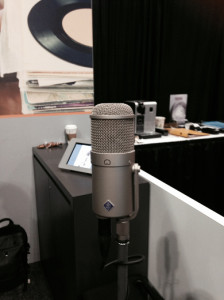
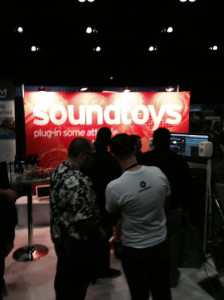
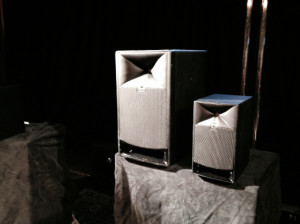
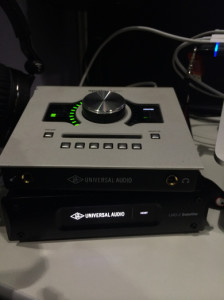
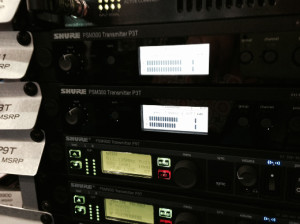
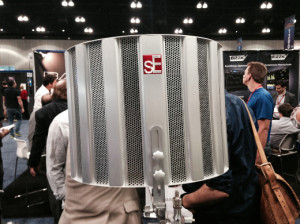
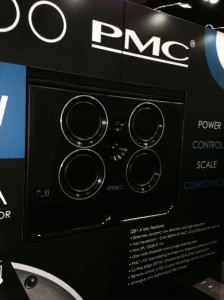
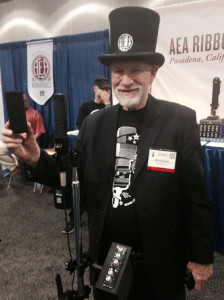
Russ Hughes
October 16, 2014 at 12:47 pm (10 years ago)Nice summary
sharkytowers
October 19, 2014 at 12:00 pm (10 years ago)Very nice summary, thanks!